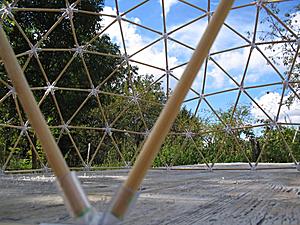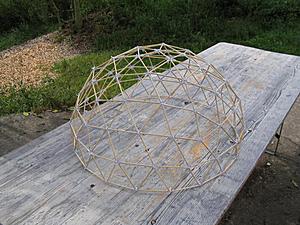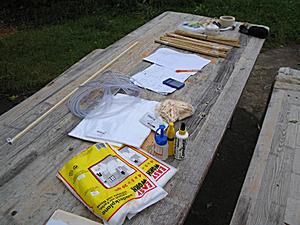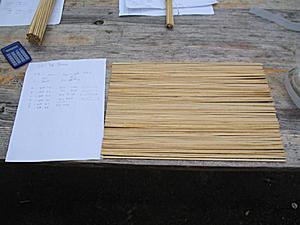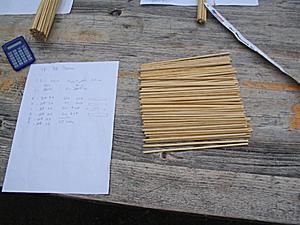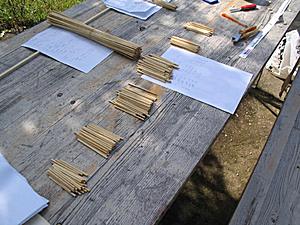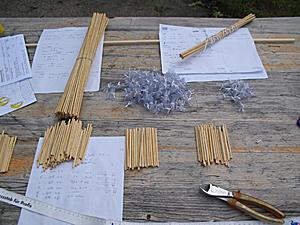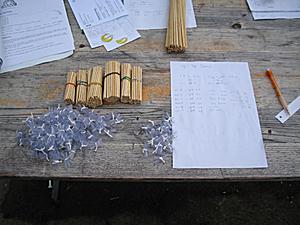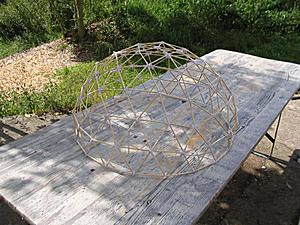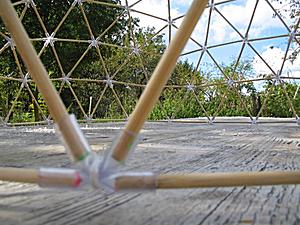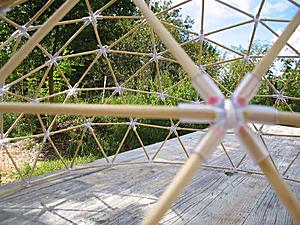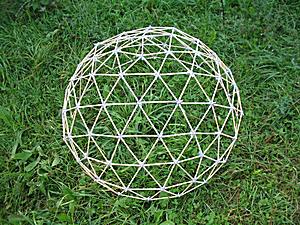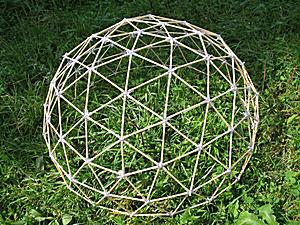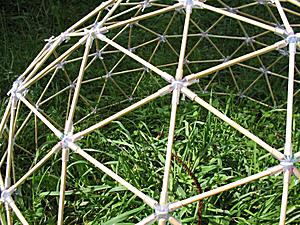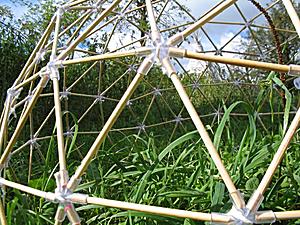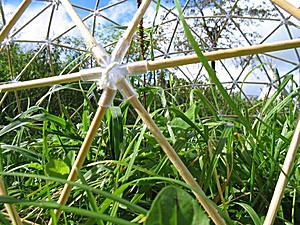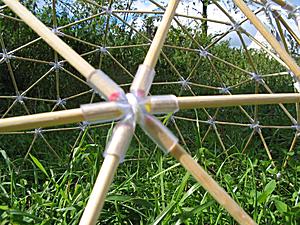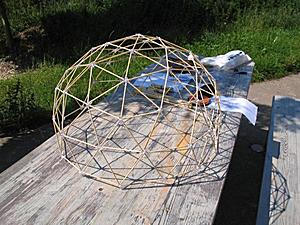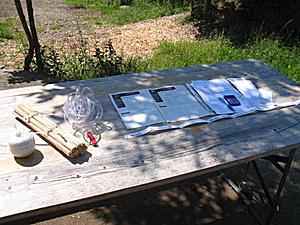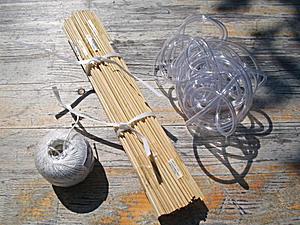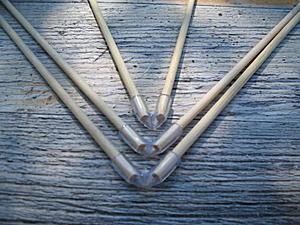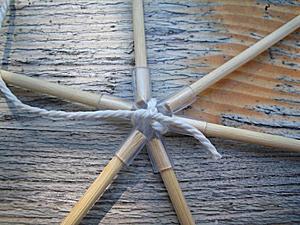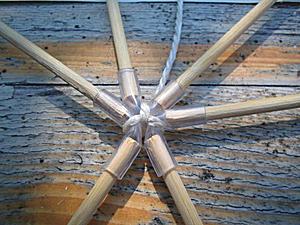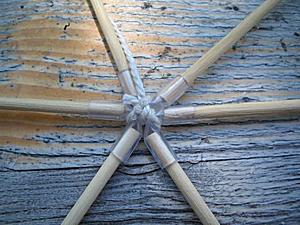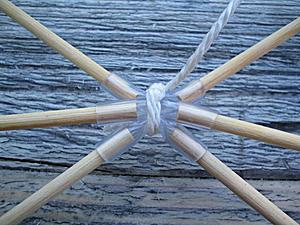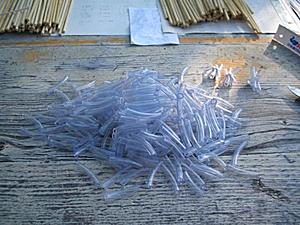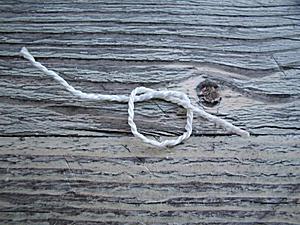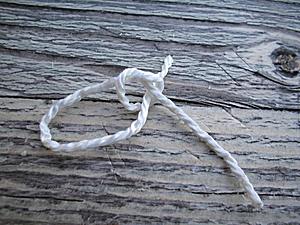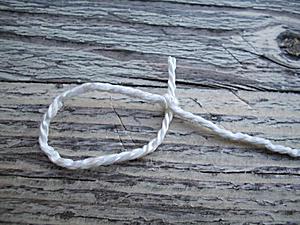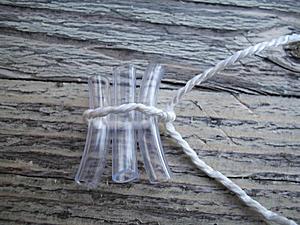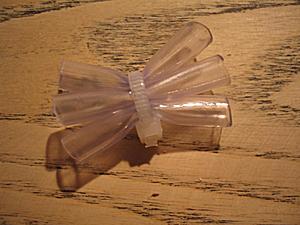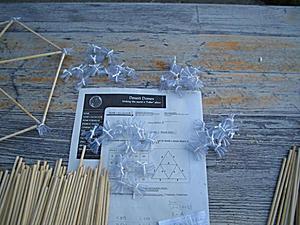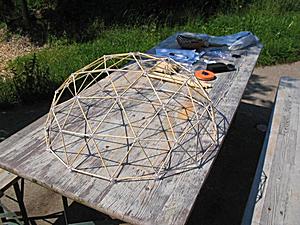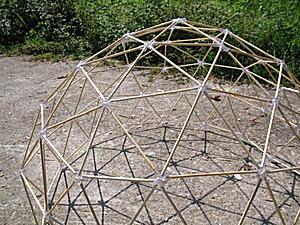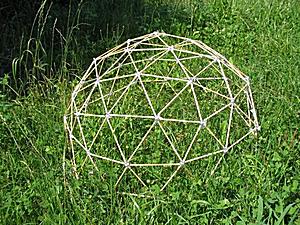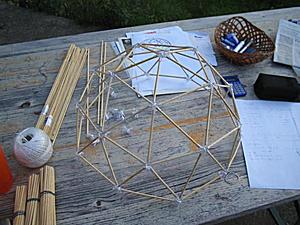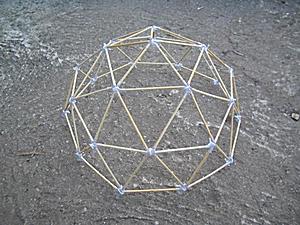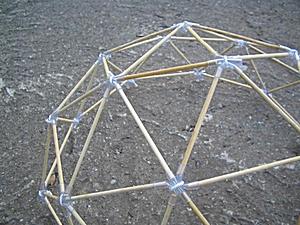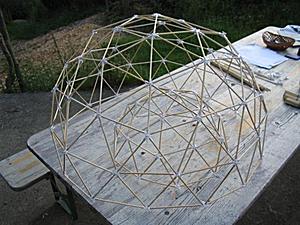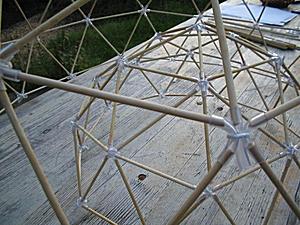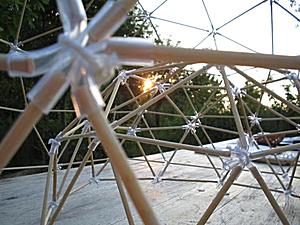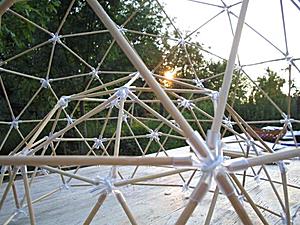
|
Geodesic Dome Diarywritten by Rene K. Mueller, Copyright (c) 2007, 2014, last updated Tue, January 20, 2015 18. 1. 2007: Starting with PlanningDue an inspiration by an reader (J. DuPont) of my web-site, who contacted me, I was looking again on the geodesic dome, which I honestly have neglected due the several arguments which arose and I felt more attracted to the bow-based domes like the star dome and the bow dome. But after the hint using a soft pipe as connector, I thought I still have apprx. 130 bamboo sticks left from a yurt building (travel yurt of 4.10m diameter I did in November 2006) and thought, let's try if I can use them for a geodesic dome. So I used the calculator as listed in the notes I wrote last year and the year before, and the 4V 4/8, which I consider more elegant than the lesser degree of 2V or 3V, almost fit the diameter of my current yurt I live in. For spring I wanted to do a star dome on the same floor and interior of my current yurt (6.4m diameter) but still some tests of the bows is required, so I'm actually consider to do 4V 4/8 geodesic dome of 6.2m or a bit larger of 6.3m diameter beforehand, just the skeleton, and use the same plans for the cover I did for the star dome I planned, so I can exchange the skeleton of the dome setup from "geodesic"- to "star"-dome. Details I still have to resolve:
rinner = √(42 + 18 * √(5)) / 12 * swhereas √(42 + 18 * √(5)) / 12 = 1/Φ = Φ-1 rinner = s / Φ Φ = s / rinner the higher subdivisions this gets lost, as there are different strut lengths s. I'm still researching the harmonics, and still have very few ideas of the meaning of the geodesic dome as such, in a metaphysical sense. So much, it is based obviously on the Icosahedron, one of the platonic solids - the geodesic dome with its triangle subdivision with approximation of the sphere - bridging the linear regular space of the Icosahedron to the bent and spherical space - a transitional space of linear to spherical space. Anyway, I still have a dome in mind with uniform length struts, with a clear structure and beauty . . . maybe the solution is to use 1 or 2 length of struts, and compose a near dome shape - with an even structure, like a series of rings composed of triangles. More background research is required. While searching for alternatives for the Icosahedron based "Geodesic Dome", I found following resources very inspiring:
Once I explored those in more depth, likely these information will flow into new (to be created) pages on this site. Update 11. 2. 2007: I just put a comprehensive overview on regular and semi-regular polyhedra, with over 110 convex polyhedra online, essentially platonic (5), archimedean (13) and johnson solids (92). Update 16. 3. 2007: I finished the comprehensive geodesic approach to various platonic and archimedean solids 10. 9. 2005: Building 4V 4/8 Model
So, B, C and F are very close, and since cutting so small bamboo so exact is hardly possible for me I made them all the same. The D and E I marked with color to distinct them. Following cuts I made then:
The 4V 4/8 dome came out very well, the 4mm pipe isn't narrow enough for the bamboo thereby the dome isn't as stable, e.g. when moving around. It would be better to have actually 1mm less diameter of the inner diameter of the pipe than the thickness of the sticks. So far, the 4V looks more filigree than the 3V I think, less edgy, obvious due higher subdivision. 30. 8. 2005: Building 2V & 3V Model
 has some suggestion about building a model using PVC pipe as junction between dome struts, and this what I did then. has some suggestion about building a model using PVC pipe as junction between dome struts, and this what I did then.
So, I bought
Cost CHF 18, € 12 or US$15. I used the 3V 5/8 calculator entered Alath+Blath+Clath = 40cm, and dhole = 0.5cm, and got my Alath, Blath and Clath to cut.
so I actually cut for a full sphere, whereas the 3V 5/8 sphere only requires A x 30, B x 55, C x 80. Following cuts I made:
Step by Step As considered I used the left-over of the 3V and some spare sticks to build a 2V 4/8 Sphere:
It has been quite some fun to build these two models, and also sense the stability within the dome while building it. Content:
|
| Home | · | About | · |  Tipi | · |  Yurt | · |  Dome | · | Features | · | Gallery |

Creative Commons (CC) BY-SA-NC 2005-2017, developed, designed and written by René K. Müller
Graphics & illustrations made with Inkscape, Tgif, Gimp, PovRay, GD.pm
Web-Site powered by FreeBSD & Debian/Linux - 100% Open Source

